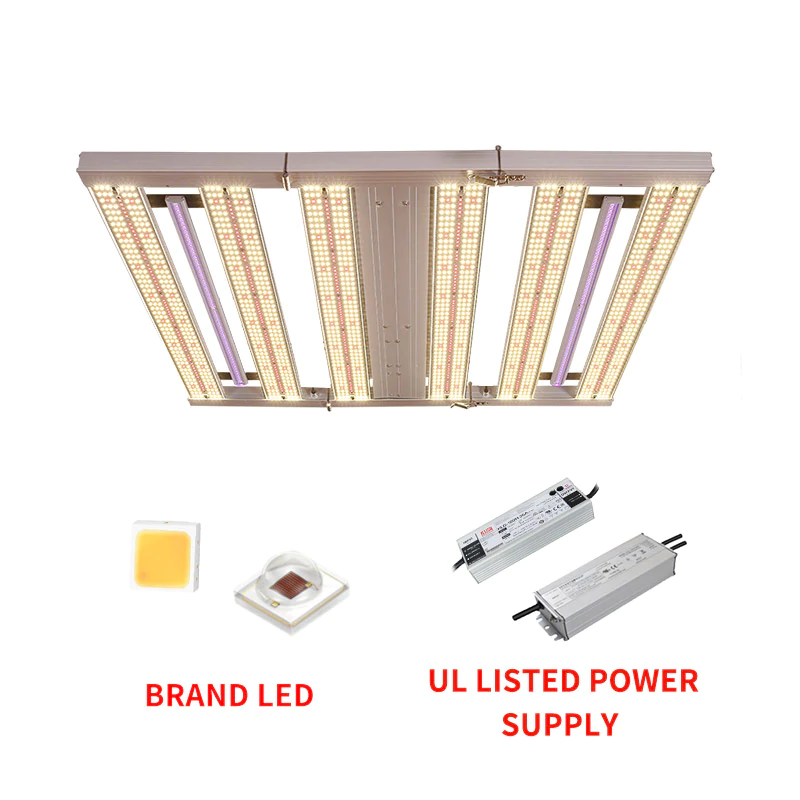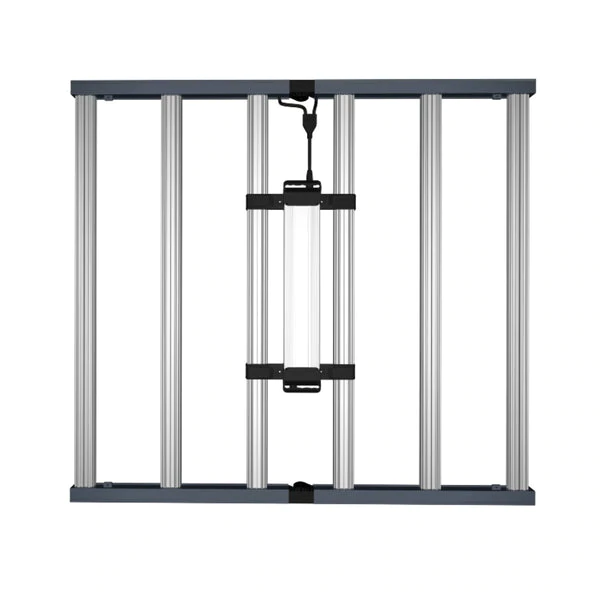- Home
- SHOP ECO FARM
-
TOP BRANDS
-
Grow Lights Brands
- Adjust-A-Wing
- Apollo Horticulture
- Bestva
- Black Dog LED
- California Lightworks
- ChilLED Grow Light
- Eco Farm
- HLG - Horticulture Lighting Group
- Kingled
- Kind LED
- Mars Hydro
- Morsen
- Neilo
- NextLight
- Phlizon
- PlatinumLed
- Roleadro
- Optic LED Grow Lights
- ViparSpectra
- Vivosun
- EYE Hortilux
- IPOWER
- NanoLux
- Phantom grow light
- Gavita grow lights
- Grower's Choice
- Lumatek
- Maxibright
- Yearld Pro
- ThinkGrow
- Crecer Lighting
- Green Sunshine Electric Sky
- fohse aries
- loriflux
- luxx
- fluence
- iluminar
- Lex
- LTC
- Rayonled
- FGI
- PHOTONTEK
- Grow Tents & Kits Brands
- Extraction & Harvest Brands
- Climate Control & Hydroponic Brands
-
Grow Lights Brands
- COMPANY INFO
- COOPERATE WITH US
- Blog
- Sign in
- Home
-
SHOP ECO FARM
- ECO Farm Grow Lights
- ECO Farm LED Grow Lights
- ECO Farm Quantum Board
- ECO Farm Samsung LED Grow Lights
- ECO Farm COB Grow Lights
- ECO Farm Commercial Lights
- ECO Farm Supplemental Grow Light
- ECO Farm Fluorescent grow lights
- ECO Farm HPS & MH Grow Lights
- ECO Farm CMH Grow Lights
- ECO Farm HID/CMH Bulbs & Ballasts
- ECO Farm Grow Tents & Kits
- ECO Farm 2x2ft Grow Kits
- ECO Farm 3x3ft Grow Kits
- ECO Farm 3.3x3.3ft Grow Kits
- ECO Farm 4x4ft Grow Kits
- ECO Farm 5x5ft Grow Kits
- ECO Farm Grow Tent - Standard Style
- ECO Farm Grow Tent - Extension & Roof & Lodge Style
- ECO Farm Extraction & Harvest
- ECO Farm Rosin Press Machine
- ECO Farm Dry & Wet Trimmers
- ECO Farm Oil Accessories
- ECO Farm Medicinal Plants Grinder
- ECO Farm Medicinal Plants Containers
- ECO Farm Medicinal Plants Dryer
- ECO Farm Refrigeration Dryer
- ECO Farm Climate Control & Other Accessories
- ECO Farm Inline Duct Fans
- ECO Farm Oscillating Fans
- ECO Farm Exhaust Fans
- ECO Farm Air Filter
- ECO Farm Duct Muffler
- ECO Farm Ventilation Kits
- ECO Farm Plant Humidifiers
- ECO Farm Plant Dehumidifiers
- ECO Farm Hydroponic Accessories
- ECO Farm Other Accessories
- ECO Farm Hydroponics Microscopes
-
TOP BRANDS
- Grow Lights Brands
- Adjust-A-Wing
- Apollo Horticulture
- Bestva
- Black Dog LED
- California Lightworks
- ChilLED Grow Light
- Eco Farm
- HLG - Horticulture Lighting Group
- Kingled
- Kind LED
- Mars Hydro
- Morsen
- Neilo
- NextLight
- Phlizon
- PlatinumLed
- Roleadro
- Optic LED Grow Lights
- ViparSpectra
- Vivosun
- EYE Hortilux
- IPOWER
- NanoLux
- Phantom grow light
- Gavita grow lights
- Grower's Choice
- Lumatek
- Maxibright
- Yearld Pro
- ThinkGrow
- Crecer Lighting
- Green Sunshine Electric Sky
- fohse aries
- loriflux
- luxx
- fluence
- iluminar
- Lex
- LTC
- Rayonled
- FGI
- PHOTONTEK
- Grow Tents & Kits Brands
- Apollo Horticulture
- Black Box
- CoolGrows
- Eco Farm
- GrowLab
- Gorilla Grow Tents
- Mars Hydro
- Quictent
- Secret Jardin
- Unit Farm
- TopoGrow
- VIVOSUN
- Topolite
-
COMPANY INFO
-
COOPERATE WITH US
- Blog
ECO Farm UI2 690W Samsung 301B Chips LED Grow Light VS Spectrum King Phoenix 680W LED Grow Light
November 21, 2022
LED grow lights have become more and more popular in recent years. Although growers find the initial investment higher than HPS, LED grow lights are more efficient.
LED grow lights are more efficient because they have a wider spectrum, use less energy to produce the same amount of light, provide better uniformity and coverage, last longer, cost less electricity, and emit less heat 40%, and more importantly provide higher yields and compare quality yields.
How do LED grow lights work?
Indoor plants do not have access to direct sunlight. Therefore, they require an artificial light source, which is where LED grow lights come in. LED grow lights are special devices powered by LED chips and electricity to produce light particles or photons. These light particles are made up of light energy of visible and invisible wavelengths, which are equivalent to the photons from the sun.
LED grow lights come in different color variations depending on the intended use. But a full spectrum LED grow light is one that produces light comprising of all the four wavebands — blue light (400–500 nm range), red light (600–700 nm range), green light (500–600 nm range), and ultraviolet (UV) light (280–400 nm range). Full spectrum grow lights are better stimulators of growth in plants.
How are LED grow lights rated?
Most of the growing community adopts the “watt per square feet (or square meter)” principle when rating grow lights. The watt/sq ft principle is often a reasonable means to assess the ability of a bub to light up a grow area. This principle is premised on Photosynthetic Photon Efficacy (PPE), which shows how efficiently a lamp or bulb converts electricity (watts) into light (photons). LED chips generally have higher PPEs, which is why they require fewer watts to emit higher amounts of light compared to other types of lamps or bulbs with lower PPEs.
ECO Farm UI2 690W Samsung 301B Chips LED Grow Light

Features:
This ECO Farm LED grow light is designed with 8 strips for a more even and complete canopy coverage. Equipped with high efficiency Samsung LM301B diode with extremely low thermal resistance. The plant light is flicker-free and dim, with a lifespan of 50,000 hours. The LED grow light consumes 690 watts at 2240 µmol/s and achieves a satisfactory PPE of 2.8 µmol/J covering high yield full cycle growth of 4'x4'. Each full spectrum LED grow light uses custom 2244 Samsung LM301B diodes. The abundance of wavelength types is consistent with the spectral range of plant photosynthesis. It can concentrate specific wavelengths of light to illuminate crops evenly, controlling plant height and plant nutrients.
Spectrum King Phoenix 680W LED Grow Light

Features:
The Spectrum King LED grow light is the new LED standard for a 1:1 1000W DE HPS replacement that consumes 36% less power while offering the highest reliability in the industry. SK Cryo-Therm cooling technology enables an ultra-thin profile that maximizes airflow and minimizes microclimates. This grow light is optimized for single or multi-level planting close to the canopy. Many growers are switching from heat-generating HPS lights to ultra-high performance LED strip lights. SonoFarm LED grow lights utilize the latest technologies on the market — from intensive research for optimum performance, to customizing the spectrum for the highest possible yield.
How to Choose the Right LED Grow Lights
Because plants can’t photosynthesize in regions with long winters, they can have a hard time growing during cold seasons. You may also opt for LED growing lights if you live in an area where your species doesn’t thrive naturally. In a nutshell, you can always use LED grow lights if you want to grow plants but don’t have enough natural light. Here are some tips for choosing the right LED grow lights for your crops:
Power
Manufacturers employ a number of measures to evaluate wattage and the amount of light they generate, making it difficult to compare LED greenhouse lighting. However, the standard metric is lumens, used to measure the brightness. To flourish, seedlings require approximately 2,000 lumens per square foot, while blooming plants may require up to 10,000 lumens.
While lumens measure visible light, biologists frequently employ photosynthetic photon flux (PPF) or photosynthetic photon flux density (PPFD) to quantify light intensity in terms of the light plants absorb. The quantity of photons of light released per second is measured in mol/second, the unit of measurement for PPF. The density of light dispersed per square meter per second is measured in mol/m2/s, while the PPFD is measured in mol/m2/s. The more efficient the light is, the greater the PPF and PPFD.
Look for a light’s “real power draw” or “actual power consumption” to determine how much electricity it consumes. This is measured in watts and provides you with an idea of how powerful the light is. However, keep in mind that because LEDs are meant to be energy efficient, bulb wattage isn’t always a useful metric.
Light Spectrum
All of the colors in the electromagnetic spectrum are present in natural sunlight. However, some LEDs can only replicate a limited range of colors, whereas white full spectrum LED grow lights can generate all hues required at every step of the growth cycle.
Here are the most important color wavelengths to keep in mind when selecting your growing lights:
Plants need blue light to grow in the early stages of their lifecycle. In their vegetative cycle, it’s the first hue plants can absorb.
Purple light is also employed in the vegetative state, although it’s less effective than blue light for photosynthesis.
Red light is beneficial in the last stages of growth and is required for buds to bloom.
All of the hues of the spectrum are represented by white light. It can be useful at any developmental stage when used alone.
Heat
When using industrial grow lights, one of the hazards is the heat generated by bulbs can harm your plants and disrupt their cycle. This is why LED grow lights are the preferred indoor lamp, as they generate extremely little heat compared to the quantity of light they produce. However, because they generate some heat, many come with built-in cooling systems to maintain adequate temperature management.
Connectivity
Most LED grow lights are designed to connect with other units in order to cover greater areas, a process known as “daisy chain connection.” This feature allows light systems to be interconnected, linked to one another from a single outlet, reducing the number of cables necessary for setup.
Conclusion
Indoor gardening is a great way to get fresh produce without the worry of growing it outdoors.
It takes a lot of effort to make these indoor gardens thrive: proper ventilation, constant temperature levels between day and night, and enough light for the photosynthetic reactions that create food from minerals, water, and air. Grow lights are essential for indoor gardens because they provide the light that plants need to grow.
Grow lights can be tricky to use, but following these simple tips will help you get the most out of your grow lights and increase your yields. With a little patience and care, you’ll have fresh fruits and vegetables in no time.
Also in Indoor Grow LED Grow Light
HLG Greenhouse Pro HE HV 630W LED Grow Light VS Geeklight grow light 480W hydroponic led grow light
October 20, 2023
